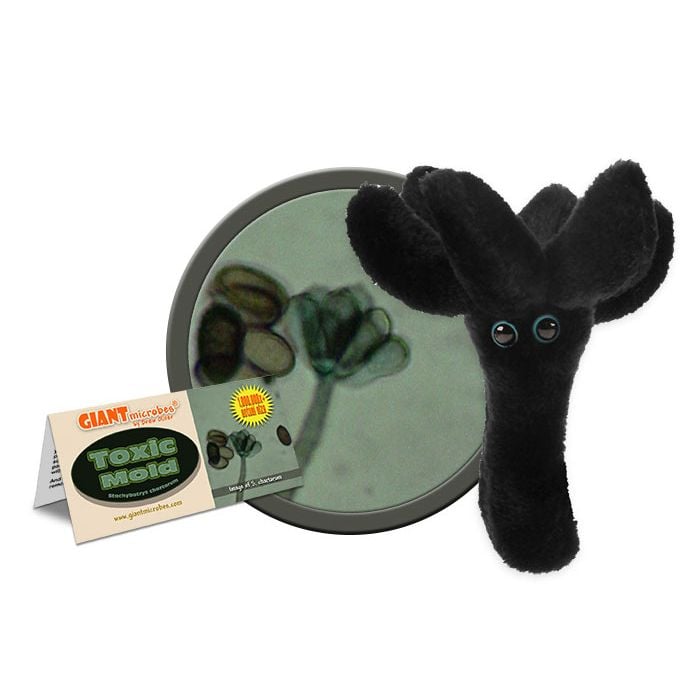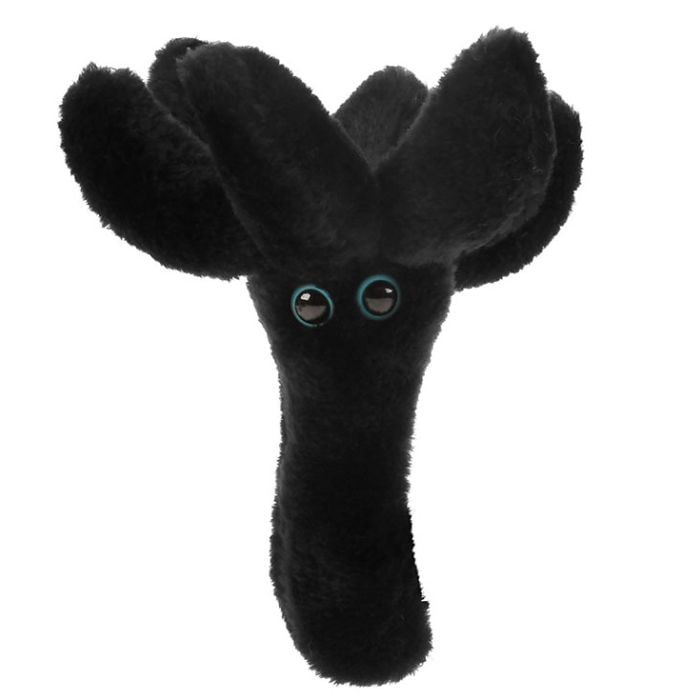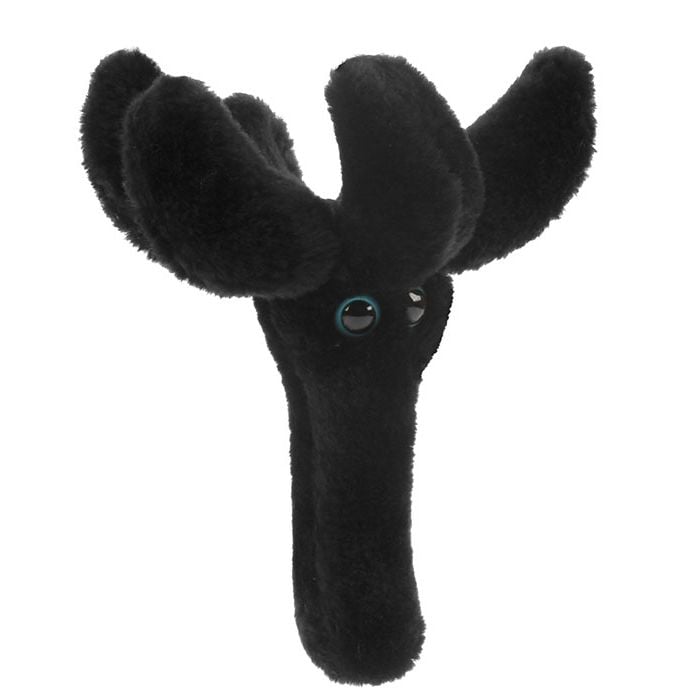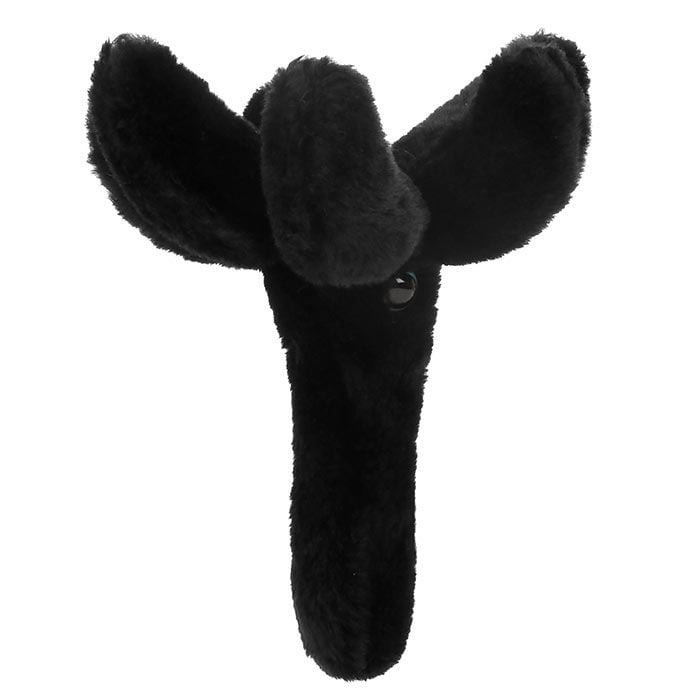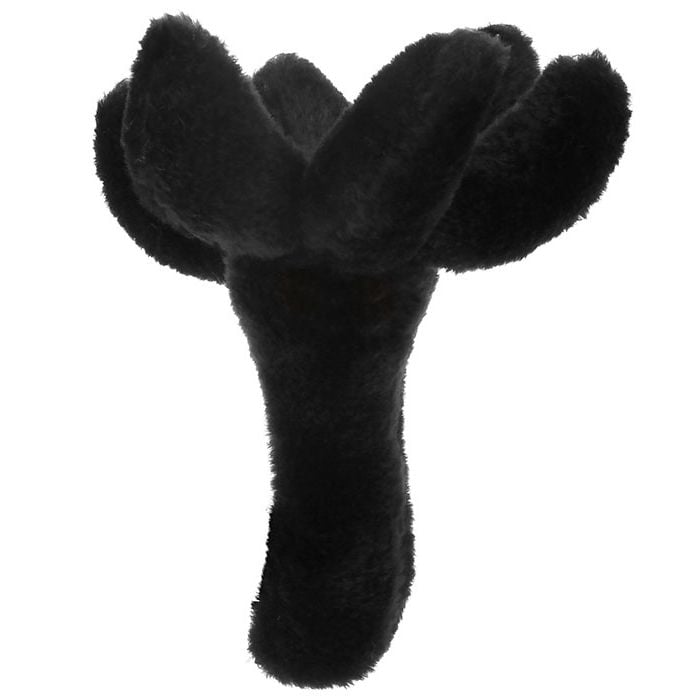Toxic Mold (Stachybotrys chartarum)
Product Details
Additional Information
| Sizes | Giantmicrobes are based on actual microbes, cells, organisms and other critters, only 1,000,000 times actual size! Gigantic (GG) 16-24" XL (XL) 10-15" Original (PD) 5-8" Keychain (KC) 2-4" with clip |
|---|---|
| Materials | Plush from all new materials. Stuffed with polyester fiber fill. Surface washable: sponge with water & soap, air dry. |
| Packaging | Each plush microbe includes a printed card with fun, educational and fascinating facts about the actual microbe or cell. |
| Safety | Every product meets or exceeds U.S. and European standards for safety. For ages 3 and up. |
All about Toxic Mold (Stachybotrys chartarum)
FACTS: Stachybotrys (or straw mold) is a black, toxic fungus that first achieved recognition in the 1930’s when horses on Russian farms became sick after eating contaminated hay. More recently, Stachy has been implicated as a cause of “sick building syndrome.”
While the mold itself is not pathogenic, it does produce toxins that can cause a variety of health problems, ranging from rashes, to fevers, to burning sensations in the eyes, nose, mouth, and throat, to life-threatening reactions for those with respiratory conditions.
Stachy does not grow on plastic, vinyl, concrete, or ceramic tiles – so the mold in your shower grout is probably something else! (There are thousands of species of molds, and many are black.) But Stachy does flourish on cellulose-containing materials, such as wallpaper, fiberboard, dust, lint (and, of course, straw). Stachy also requires unusually high moisture levels to grow. While extreme humidity and condensation can produce the requisite wetness, typically flooding or plumbing leaks are responsible.
The best way to keep black, toxic mold from establishing itself near you is to keep indoor humidity below 60% and to address any moisture problems immediately. But if you do discover black mold lurking in some dank location, bleach can sometimes be used to remove it, particularly from flat surfaces (though remember not to mix bleach with ammonia, as the fumes themselves are toxic.)
And if the mold has penetrated walls or floors? Maybe it’s time to remodel.
| Name | It is a member of the Deuteromycetes, order Moniliales, family Dematiaceae, and is common on plant debris and in soil. |
|---|
| Where It Lives | When a mold produces mycotoxins, it is deemed toxic. The spores are found in soil that is introduced to flood waters. Soil can get into materials while building homes and water can carry the soil that eventually gets into the household and is then inhaled. |
|---|
| Symptoms | Exposure can result in coughing and wheezing and more severe respiratory symptoms in those with asthma or weakened immune systems |
|---|
| Cure | Eliminating the mold from the environment and getting medications to help with the symptoms |
|---|
| History |
1837: Corda was the first to describe the mold as S. atra Big Outbreaks: 1930s: An outbreak hits in Europe effecting horses and other animals. Later in the decade humans started to get the toxin. 1977: Outbreak in Hungary with farms that worked with infested straw Recent Outbreaks: 1993-1994: A number of cases in infants occurred that caused pulmonary hemorrhaging. |
|---|
| Fascinating Facts |
Toxic mold is one of the causes of the “sick building syndrome” Caught the attention of media and was on Time Magazine in 2001, and the New York Times in 1996 |
|---|







